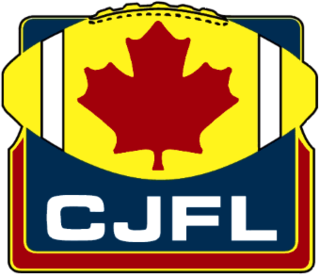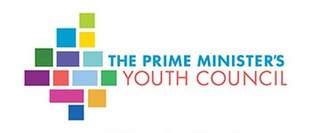Related Research Articles

Canada has a large domestic and foreign tourism industry. The second largest country in the world, Canada's incredible geographical variety is a significant tourist attractor. Much of the country's tourism is centred in the following regions: Toronto, Montreal, Quebec City, Vancouver/Whistler, Niagara Falls, Vancouver Island, Canadian Rockies, British Columbia's Okanagan Valley, Churchill, Manitoba and the national capital region Ottawa. The large cities are known for their culture, diversity, as well as the many national parks and historic sites.

The Canadian Federation of Engineering Students (CFES) is the national association of undergraduate engineering student societies in Canada and exists to organize activities, provide services and interact with professional and other bodies at the national and international level for the benefit of Canadian engineering students. The organization is a bilingual non-profit corporation based in Ottawa, Ontario, Canada, managed by a volunteer team of engineering students and recent graduates from across Canada.

Events from the year 1960 in Canada.
Canada's contemporary theatre reflects a rich diversity of regional and cultural identities. Since the late 1960s, there has been a concerted effort to develop the voice of the 'Canadian playwright', which is reflected in the nationally focused programming of many of the country's theatres. Within this 'Canadian voice' are a plurality of perspectives - that of the First Nations, new immigrants, French Canadians, sexual minorities, etc. - and a multitude of theatre companies have been created to specifically service and support these voices.

The Canadian Junior Football League (CJFL) is a national Major Junior Canadian football league consisting of 18 teams playing in six provinces across Canada. The teams compete annually for the Canadian Bowl. Many CJFL players move on to professional football careers in the Canadian Football League (CFL) and elsewhere.

A Canadian Forces base or CFB is a military installation of the Canadian Armed Forces. For a facility to qualify as a Canadian Forces base, it must station one or more major units.
Canada's National Airport System (NAS) was defined in the National Airports Policy published in 1994. It was intended to include all airports with an annual traffic of 200,000 passengers or more, as well as airports serving the national, provincial and territorial capitals.
The Royal Canadian Numismatic Association was founded in 1950. It is a nonprofit association for coin collectors and other people interested in Canadian numismatics. It has members throughout Canada and in other countries. At times, it also works with the Canadian Association for Numismatic Education (CAFNE), an arms length organization, which is defined by the CRA as a Canadian educational and charitable organization. CAFNE provides funding for some of the RCNA's educational seminars and publications.
Expenditures by federal and provincial organizations on scientific research and development accounted for about 10% of all such spending in Canada in 2006. These organizations are active in natural and social science research, engineering research, industrial research and medical research.

The 2010 Winter Olympics Torch Relay was a 106-day run, from October 30, 2009 until February 12, 2010, prior to the 2010 Winter Olympics. Plans for the relay were originally announced November 21, 2008 by the Vancouver Organizing Committee for the 2010 Olympic and Paralympic Winter Games (VANOC). Communities were initially informed in June 2008, but the locations were not announced for "security reasons". Exact routes were later announced several weeks before the start of the torch relay.

The Salvation Army in Canada is the Canadian territory of a Christian church that is known for its charity work, with a motto of Giving Hope Today. The Salvation Army was formed in 1865 in London, England, and it began working in Canada in 1882. Today, it operates in 400 communities across Canada and in Bermuda. The Salvation Army Archives are in Toronto, and the Salvation Army's Training College is in Winnipeg.

The Dominion Exhibition was an exhibition held annually in Canada from 1879 to 1913. Every year the federal government awarded the role of host of the exhibition to one of the country's larger fairs.
Diana Thorneycroft is a Canadian artist based in Winnipeg, Manitoba, whose work has exhibited nationally and internationally. Thorneycroft works primarily in photography, drawing, and sculpture/installation. Her work blurs the lines between gendered bodies by employing phalluses.

The Prime Minister's Youth Council is an advisory board created by the Prime Minister of Canada Justin Trudeau in 2016. Currently, 10 Canadian youth aged 16 to 24 comprise the non-partisan board. Members advise the prime minister on education, economy, climate change and other issues affecting youth.
References
- ↑ "Canadian Association for Suicide Prevention / L'Association canadienne pour la prévention du suicide". Giving Tuesday. Retrieved 2021-02-16.
- ↑ "Halifax police chief wIoanna Roumeliotis. [https://newsinteractives.cbc.ca/longform/subway-suicide-prevention-ttc "Out of darkness"]. *CBC. (Sept. 14,2019).ants to explore releasing monthly suicide stats". Global News, June 20, 2017
- ↑ Government of Canada. "Related national efforts and milestones: Suicide related research in Canada: B. Related national efforts and key milestones". (Sept. 12, 2005).
- ↑ Leenaars, Antoon A. (September 2000). "Suicide Prevention in Canada: A History of a Community Approach". Canadian Journal of Community Mental Health. 19 (2): 57–73. doi:10.7870/cjcmh-2000-0015. ISSN 0713-3936.
- ↑ "From racism to resource *development, here are the political stories Inuit watched in 2016". Elyse Skura · CBC News Jan 1, 2017
- ↑ "Canadians rally in support of suicide prevention". Canadian Mental Health Association website (Sept.8,2012)
- ↑ "Suicide policies in Canada and beyond: What's working and what needs to change". Ottawa Citizen, Joanne Laucius, April 18, 2019
- ↑ Rebecca Sanford. "Working together to prevent suicide, alleviate suffering". Kamloops This Week, September 5, 2019
- ↑ "World Suicide Prevention Awareness Day in Prince Rupert". The Northern View, Jenna CoculloSep. 13, 2019
- ↑ "Disturbing 'Momo Challenge' addressed in West Shore schools". CTV Vancouver Island, February 27, 2019